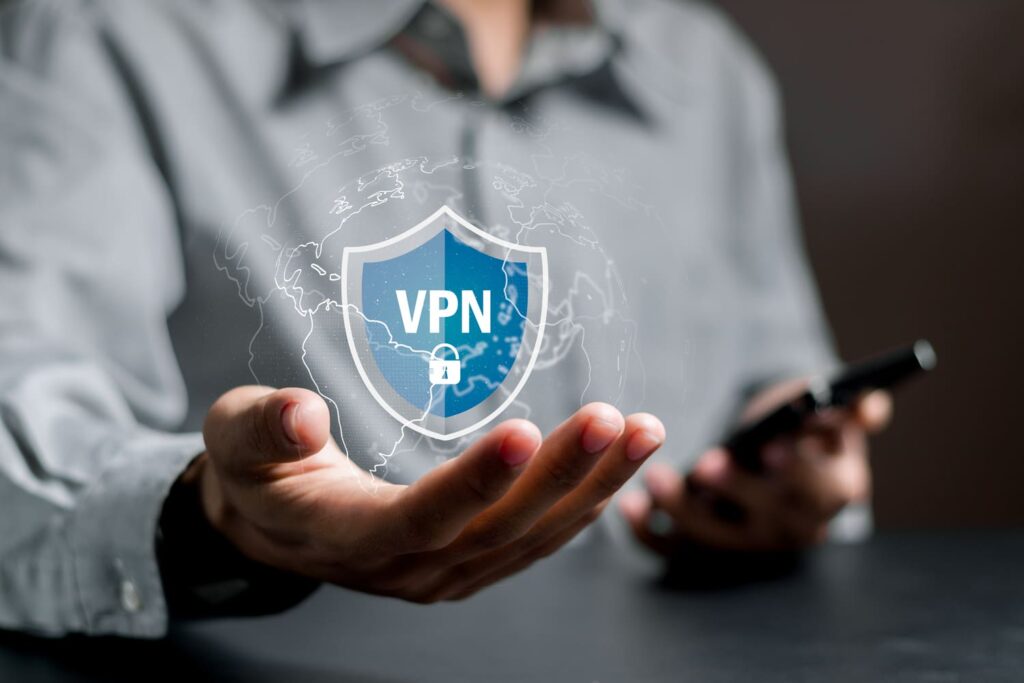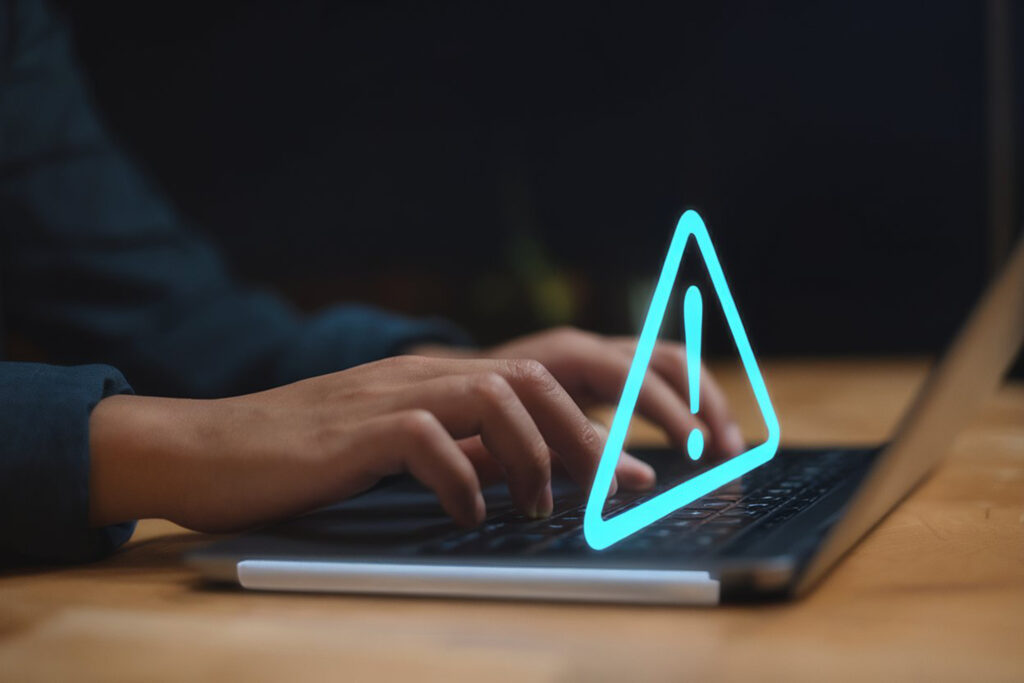Introdução
Imagine começar o dia como qualquer outro: você checa seus e-mails, abre alguns documentos e segue com as tarefas, e, de repente, tudo trava. Seus arquivos somem. Uma mensagem aparece na tela: seus dados foram criptografados e só serão liberados após o pagamento de um resgate.
Essa cena, que parece de filme, virou rotina no mundo real. Segundo o relatório SonicWall Cyber Threat Report 2024, só em 2023, os laboratórios da SonicWall registraram 317,6 milhões de ataques de ransomware, um volume que ficou apenas 36% abaixo do recorde histórico, tornando 2023 como o terceiro pior ano já registrado em volume de ataques.
Esses números não servem apenas para alarmar. Eles revelam o quanto o ransomware deixou de ser uma ameaça pontual para se tornar um risco constante, capaz de atingir qualquer empresa, independentemente do porte, do setor ou da localização.
Este manual de sobrevivência foi criado para apoiar empresas como a sua a se anteciparem, agirem com estratégia e reagirem com segurança. Vamos entender o que está por trás dessa ameaça e como a Skyone pode ser sua parceira nessa jornada?
Boa leitura!
Ransomware: a ameaça invisível que paralisa empresas reais
Ransomware é um tipo de ataque cibernético que bloqueia o acesso a dados ou sistemas, e exige o pagamento de um resgate para restaurar o controle. Na prática, é como se os dados da sua empresa fossem colocados atrás de um cofre virtual, e a chave estivesse nas mãos do criminoso.
O objetivo desses ataques não é apenas roubar informações, mas causar interrupção imediata. O ransomware visa paralisar operações, gerar caos e forçar a empresa a pagar pela retomada da normalidade. O pagamento, normalmente exigido em criptomoedas, nem sempre garante a devolução dos dados, e, muitas vezes, abre portas para novas extorsões.
Diferentemente de ameaças que atuam em silêncio, aqui o impacto é direto, perceptível e urgente. Em minutos, o que parecia apenas mais um dia de trabalho vira um cenário de crise.
Um “sequestro digital” que virou negócio lucrativo para criminosos
Hoje, o ransomware opera sob um modelo que lembra o de startups de tecnologia: escalável, colaborativo e altamente lucrativo. É o chamado Ransomware as a Service (RaaS), onde grupos desenvolvem o malware e afiliados o executam em troca de uma comissão sobre o resgate.
Em 2024, as demandas de resgate chegaram a valores médios de US$ 5,2 milhões, segundo a Mandiant. Em casos mais extremos, o valor exigido ultrapassou US$ 70 milhões.
Esses números mostram que não estamos diante de ataques improvisados, mas sim de operações com foco, método e retorno financeiro expressivo.
Efeitos colaterais: o que um ataque pode causar na prática
Quando o ransomware atinge, o problema não se limita ao que foi criptografado. A empresa lida com paradas não planejadas, perda de dados estratégicos, riscos legais e impactos reputacionais — tudo ao mesmo tempo.
De acordo com a Varonis, um ataque de ransomware causa, em média, 24 dias de inatividade operacional. Ou seja, são três semanas sem pleno funcionamento, o que é o suficiente para comprometer entregas, desgastar a relação com clientes e provocar rupturas internas difíceis de contornar.
Agora que entendemos o tamanho e a lógica dessa ameaça, é hora de aprofundar. No próximo tópico, vamos explorar os principais tipos de ransomware e o que os diferencia em termos de risco e impacto. Afinal de contas, conhecer essas variações é essencial para reconhecer vulnerabilidades e agir com mais precisão.
Quem são eles: os tipos de ransomware mais usados por atacantes
O ransomware pode parecer um único tipo de ameaça, mas é, na verdade, um guarda-chuva que abriga uma variedade de estratégias e códigos maliciosos. Cada uma dessas variações é pensada para maximizar impacto, dificultar a resposta e, principalmente, garantir retorno financeiro aos atacantes.
Compreender as táticas mais comuns usadas nesses ataques, desde os vetores iniciais até o comportamento do ransomware dentro da rede, é o primeiro passo para montar uma defesa eficaz. Nesta seção, vamos olhar para os três aspectos mais críticos: como os ataques entram, como se desenrolam e o que aprendemos com casos emblemáticos.
Vetores de infecção comuns
Na maioria das vezes, os ataques não começam com uma grande falha de segurança. Eles se aproveitam de pequenas brechas, comportamentos rotineiros e sistemas que ficaram esquecidos sem atualização.
Segundo o relatório da Sophos, 32% dos ataques de ransomware em 2024 exploraram vulnerabilidades não corrigidas em softwares ou sistemas expostos. Outros vetores recorrentes incluem e-mails com anexos maliciosos, acesso remoto sem proteção adequada, credenciais vazadas e, claro, engenharia social.
O que esses caminhos têm em comum? Todos são evitáveis. E isso reforça um ponto importante: a maioria dos ataques não exige técnicas avançadas. Eles exploram distrações, falta de processo e confiança em excesso na rotina.
Fases de um ataque de ransomware
O ransomware é um processo. E como todo processo, ele segue etapas bem definidas, o que torna possível interceptá-lo antes do ponto de ruptura. As fases mais comuns envolvem:
- Reconhecimento do ambiente;
- Distribuição do malware;
- Acesso remoto e controle;
- Movimentação lateral pela rede;
- Criptografia e exigência de resgate.
Esse padrão, documentado por análises da TechTarget, mostra como o ataque muitas vezes se instala dias ou semanas antes da criptografia final. E por isso, detectar sinais anômalos nas fases iniciais pode ser a diferença entre um incidente isolado e um colapso operacional.
Muitos ataques só são percebidos na etapa final, quando os dados já estão inacessíveis. Mas, com visibilidade e monitoramento, há chances reais de interromper o ataque antes disso.
Exemplos de ataques notórios
Alguns ataques marcam a história não apenas pela escala, mas pela forma como escancaram fragilidades que muitos preferem ignorar. O que começa com um acesso indevido pode virar notícia global, bem como, impacto direto no cotidiano de milhões de pessoas.
Foi exatamente o que aconteceu com o WannaCry, em 2017. Um ransomware simples, baseado em uma falha conhecida e não corrigida, se espalhou por mais de 150 países e paralisou mais de 300 mil máquinas em poucos dias. Hospitais, transportes, empresas privadas. As perdas ultrapassaram 4 bilhões de dólares e, ainda hoje, o episódio é referência sobre o custo da negligência.
Quatro anos depois, o Colonial Pipeline, responsável por quase metade do abastecimento de combustível da costa leste dos EUA, teve que suspender suas operações por causa de um ataque do grupo DarkSide. O evento provocou desabastecimento em 17 estados, levou ao pagamento de US$ 4,4 milhões em resgate e mobilizou o próprio FBI.
No Brasil, em 2020, o STJ também entrou para essa lista. Durante uma semana, o Superior Tribunal de Justiça teve seus sistemas criptografados, sessões interrompidas e milhares de documentos inacessíveis. Foi um lembrete duro: nem mesmo instituições tão importantes estão imunes quando os controles falham.
Esses episódios são diferentes em geografia, setor e escala. Mas todos têm algo em comum: mostraram que não é preciso uma falha catastrófica para que o ransomware encontre espaço. Muitas vezes, basta um detalhe ignorado e a ausência de um plano real de resposta.
Por isso, no próximo tópico, vamos deixar os exemplos de lado e olhar para dentro da operação: por onde o ransomware entra, e quais comportamentos ou decisões abrem as portas para o risco?
Roteiro básico para não cair na armadilha
Falar em ransomware pode soar distante, mas a realidade é que a maioria dos ataques começa de forma simples e previsível. Nenhum invasor precisa de superpoderes se encontrar portas abertas.
Podemos afirmar que prevenir não é sobre colocar cadeados em tudo, mas sobre fazer o básico com consistência. E é justamente isso que muitas empresas não conseguem manter. Felizmente, há muito que pode ser feito agora, começando pelas atitudes.
- Mantenha seus sistemas com os dois pés no presente: softwares desatualizados são como vitrines quebradas: chamam atenção e expõem o que há de mais valioso. Segundo a CISA (Cybersecurity and Infrastructure Security Agency), uma parcela significativa dos ataques exploram falhas conhecidas, aquelas que já têm correção disponível, mas que ainda não foram aplicadas;
- Acesso demais é convite aberto ao estrago: nem todo mundo precisa ver tudo. Garantir que cada usuário acesse apenas o que precisa é uma forma de conter os danos caso algo saia do controle. É a velha lógica: quanto menor o alcance do erro, menor o impacto do incidente;
- Backup não pode ser só uma formalidade: não basta fazer backup, é preciso saber se ele funciona. Cópias devem ser criptografadas, armazenadas fora da rede principal e testadas com frequência. Sem isso, o risco é descobrir, tarde demais, que o “plano B” também foi sequestrado;
- Segurança precisa ser parte da rotina, não exceção: investir em ferramentas é essencial. Mas criar cultura de segurança é o que sustenta a proteção no dia a dia. Reforce boas práticas, promova treinamentos realistas e trate erros como oportunidades de aprendizado, e não apenas como falhas;
- Faça acompanhamentos antes que o problema apareça na sua tela: monitoramento contínuo permite detectar padrões estranhos antes que eles se tornem crises. Soluções que automatizam alertas e respostas ajudam a antecipar movimentos suspeitos, mesmo fora do horário comercial.
Tomar essas medidas não significa que sua empresa está imune. Mas ela estará mais preparada, mais atenta e menos vulnerável às armadilhas mais comuns. E se, mesmo com tudo isso, o ataque acontecer? É exatamente isso que vamos abordar no próximo tópico.
Se o ataque já aconteceu: como reagir com inteligência?
Quando o ransomware atinge, o relógio começa a contar — e cada minuto importa. Nessa hora, não adianta agir por instinto ou desespero. O que define o impacto real do ataque não é só a invasão em si, mas a forma como sua empresa responde nas primeiras horas.
Respirar fundo e seguir um plano claro pode fazer a diferença entre uma crise controlada e um desastre de longo prazo. Abaixo, trazemos os três movimentos fundamentais que devem orientar a resposta imediata:
- Isolar o problema e acionar especialistas: assim que o ataque for identificado, isole máquinas afetadas da rede, desative acessos temporariamente e evite qualquer tentativa de restauração sem apoio técnico. Intervenções precipitadas podem agravar o dano ou apagar pistas importantes. Preserve os registros, logs e arquivos suspeitos: eles podem ser cruciais para a investigação. Acione rapidamente a equipe de segurança interna ou um parceiro especializado;
- Recuperar o que for possível com segurança: com o ambiente controlado, é hora de entender o que pode ser recuperado. Isso inclui restaurar sistemas a partir de backups confiáveis, revalidar acessos e monitorar novas tentativas de invasão. Priorize áreas críticas e garanta que o ataque não tenha deixado portas abertas para novas ofensivas;
- Comunicar com responsabilidade: a transparência é uma aliada. Clientes, fornecedores, parceiros e autoridades podem precisar ser notificados, especialmente quando há indícios de vazamento de dados ou impacto legal. Uma comunicação clara e alinhada ajuda a preservar a confiança. E, se necessário, envolva apoio jurídico para avaliar obrigações específicas, como as previstas pela LGPD (Lei Geral de Proteção de Dados).
Reagir com inteligência não significa improvisar, e sim, ter preparo, acesso rápido às informações certas e parceiros confiáveis ao lado. E é nesse ponto que entra a Skyone. A seguir, mostramos como atuamos para proteger empresas em todo o ciclo do processo. Confira!
Como a Skyone atua na proteção contra ransomware
Ransomware não se combate com promessas genéricas, e sim, com arquitetura sólida, processos bem definidos e decisões orientadas por dados. É por isso que, na Skyone, segurança não é um recurso isolado: ela está no centro de tudo o que entregamos como plataforma.
Nosso papel vai além de proteger dados. Atuamos para garantir a continuidade das operações, fortalecer a resiliência digital e ampliar a visibilidade sobre o que realmente importa. Desde a infraestrutura em nuvem até o controle de acessos e a governança de aplicações, construímos soluções com foco em prevenir falhas, responder com agilidade e evitar reincidências.
Sabemos que cada empresa vive uma realidade única, e que não dá para proteger o que não se entende. Por isso, nosso trabalho começa ouvindo, diagnosticando e co-criando com cada cliente uma abordagem prática, sob medida e sustentável.
Quer conversar com quem entende de nuvem, sistemas legados e segurança com profundidade? Fale com um de nossos especialistas da Skyone e vamos explorar juntos o melhor caminho para a realidade do seu negócio!
Conclusão
Ao longo deste manual, vimos que o ransomware é uma realidade operacional que exige preparo. Entender como ele age, reconhecer os sinais e estabelecer práticas consistentes de prevenção não é um diferencial competitivo, mas sim, o novo padrão mínimo de maturidade digital.
Cada vulnerabilidade ignorada, cada processo sem revisão, cada dado sem proteção clara pode ser o elo fraco que abre espaço para uma crise. E, diante de ataques cada vez mais coordenados e sofisticados, agir com estratégia deixa de ser opcional.
Se esse conteúdo te ajudou a enxergar o ransomware com mais clareza e responsabilidade, vale continuar explorando mais sobre tecnologia! No blog da Skyone, você encontra outros textos sobre segurança, cloud, sistemas legados e gestão de riscos, sempre com foco prático e visão de futuro. Acesse nosso blog e siga transformando informação em decisão!
FAQ: perguntas frequentes sobre ransomware
Seja por curiosidade, preocupação ou um alerta recente, é comum que as primeiras dúvidas sobre ransomware surjam de forma urgente. A seguir, reunimos respostas diretas para as perguntas que mais aparecem, tanto em buscas online quanto nas conversas entre líderes de tecnologia, segurança e negócio.
O que é ransomware e como ele funciona?
Ransomware é um tipo de software malicioso que bloqueia o acesso a dados ou sistemas inteiros e exige um pagamento (o “resgate”) para liberar o acesso. O ataque costuma ocorrer em etapas silenciosas, e o sequestro dos dados só se torna visível na fase final, quando uma mensagem de extorsão é exibida. Mesmo que o pagamento seja feito, não há garantia de recuperação dos dados, nem de que a empresa não será atacada novamente.
Como saber se minha empresa está sendo alvo de um ataque de ransomware?
Sinais iniciais incluem lentidão fora do comum, arquivos corrompidos ou renomeados, acessos não autorizados e alertas de sistemas de segurança. Em fases mais avançadas, aparecem mensagens de resgate e bloqueios totais de sistemas. Ter ferramentas de monitoramento e detecção precoce pode ajudar a identificar a ameaça antes que o dano seja irreversível.
Pagar o resgate garante a recuperação dos dados?
Não. Mesmo após o pagamento, muitos atacantes não fornecem as chaves de descriptografia ou enviam arquivos corrompidos. Além disso, o pagamento pode expor a empresa a novas extorsões, já que ela passa a ser vista como um alvo vulnerável. A melhor forma de proteção continua sendo a prevenção, o backup seguro e o plano de resposta a incidentes.





